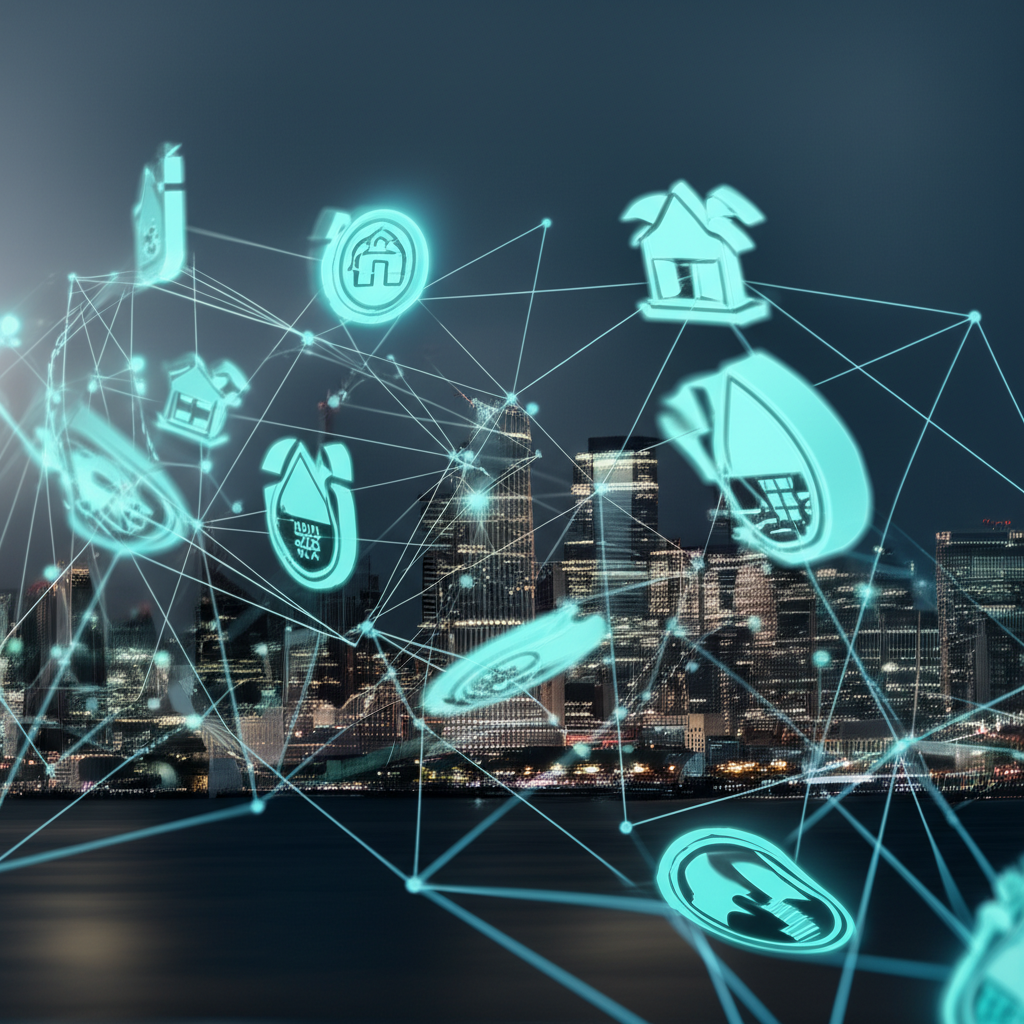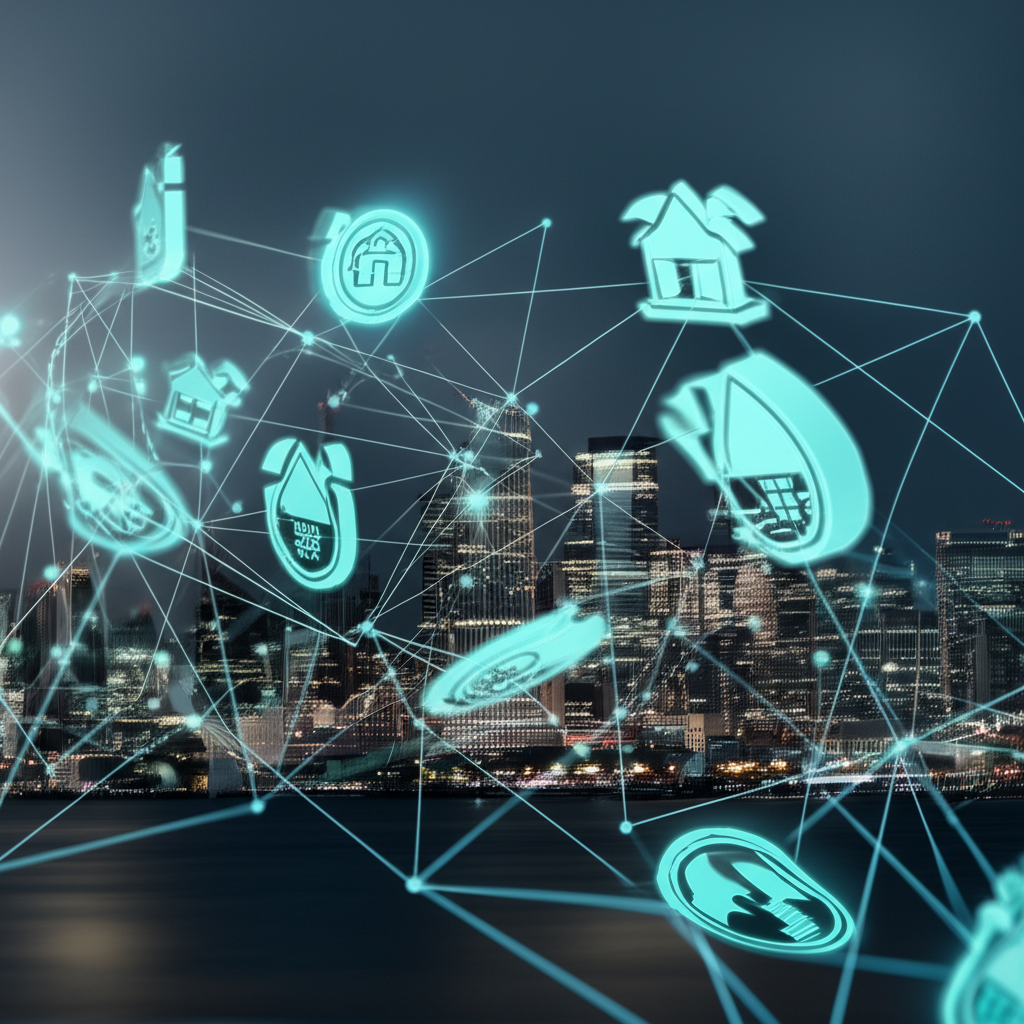Introduction: The Dawn of Real Asset Tokenization in the United States
The financial world in America stands at the brink of major change, fueled by cutting-edge digital tools. Investors and companies across the US are shifting their focus from conventional investments to the emerging field of tokenizing real-world assets. Far more than a simple tech tweak, this approach promises to redefine ownership, funding, and transactions in profound ways. As 2025 approaches, grasping the essentials of tokenization-its advantages, obstacles, and real-world applications-will be essential for anyone aiming to thrive in the dynamic US financial scene. This guide provides an in-depth, future-oriented overview designed for American investors and businesses ready to tap into fresh opportunities and gain an advantage in the digital economy.

What is Tokenization of Real Assets? A US-Centric Explanation
Defining Real Asset Tokenization for the US Market
Tokenization of real assets essentially involves turning rights to physical or tangible items into blockchain-based digital tokens. These real-world assets, or RWAs, include everything from physical items like property, artwork, and raw materials to non-physical ones such as patents or income flows. In the American context, it transforms hard-to-sell or exclusive investments into flexible, shareable digital pieces on a reliable, open, and distributed system. The goal is to mirror the asset’s worth while giving token owners clear benefits, like partial stakes, payouts, or decision-making power, all managed through automated smart contracts.
The Blockchain Backbone: How Tokenization Works
Blockchain, or distributed ledger technology, forms the sturdy foundation for this process. Breaking it down simply:
- Asset Digitization: Start by selecting a real asset and confirming its legal status. Key details, such as deeds or valuations, get digitized for the record.
- Token Creation: Generate a set number of tokens on a blockchain like Ethereum or Solana, where each one stands for a slice of the asset.
- Smart Contracts: These coded agreements on the blockchain outline the token rules, covering ownership, profit sharing, transfer limits, and legal terms, with built-in transparency and automatic execution.
- Cryptographic Security: Every deal and record gets encrypted and locked in place, guarding against tampering or deceit.
This setup guarantees that tokenized assets remain safe, checkable, and reachable worldwide, while sticking to all required rules.

Core Principles: Fractional Ownership, Enhanced Liquidity, and Accessibility
For the US investment scene, tokenization shines through its key strengths:
- Fractional Ownership: Expensive holdings, such as a multimillion-dollar office tower, can split into countless tokens, letting everyday investors claim small portions that were once out of reach due to cost.
- Enhanced Liquidity: Assets like homes or collectibles often lingered on the market for ages before selling. Now, tokenized shares can trade swiftly on secondary markets, breathing new life into stagnant investments.
- Accessibility: It cuts through location-based limits and paperwork hassles, inviting a wider crowd-including Americans diversifying abroad-to join in.
The Transformative Benefits of Real Asset Tokenization for US Investors and Businesses
Tokenizing real assets opens up a world of gains, set to make finance more inclusive and efficient for sectors throughout the United States.
Unlocking Liquidity for Illiquid Assets
One standout perk for American asset owners is tapping into cash from holdings that typically tie up funds. Property owners, private equity participants, or collectors can convert their items into tokens to secure funding without a full sale. This fluid approach lets US investors dip in and out of deals that used to demand years-long holds and hefty fees, boosting economic flow and smarter money use.
Democratizing Investment through Fractional Ownership
By allowing slices of premium assets, tokenization hands power to average US investors. Picture holding a stake in a New York high-rise, a segment of famous paintings, or part of a green energy venture. Such options build diverse portfolios once reserved for big players or the rich, giving ordinary folks a fairer shot at growth.
Increasing Transparency and Security
Blockchain’s core traits deliver top-notch clarity and protection. Every move logs permanently on a public ledger anyone can inspect, curbing fraud and conflicts. US companies benefit from simpler audits, better rule-following, and stronger partner confidence. Plus, encryption shields against illicit shifts and upholds true ownership.
Global Reach and Operational Efficiencies
This tech erases borders, letting US owners draw funds from international sources and exposing American assets to worldwide buyers. Better pricing emerges from larger pools, fueling stronger markets. Smart contracts also handle paperwork and transfers automatically, slashing middlemen, fees, and delays for smoother US operations.
Leading Use Cases: Real Estate Tokenization Spearheading Innovation in the United States
Tokenization applies broadly, but real estate leads the way in the US, showcasing its hands-on value and huge upside.
Tokenized Real Estate: Prominent US Examples and Platforms
With its steep prices, slow sales, and tangled rules, real estate fits tokenization perfectly. American efforts are ramping up through initial ventures and dedicated sites:
- Commercial Properties: Efforts are tokenizing portions of office spaces, letting backers collect rents or gain from value rises.
- Residential Properties: Though regulations complicate it, projects are testing tokens for single homes or apartment blocks to spread ownership wider.
- REITs (Real Estate Investment Trusts): Digitized versions could outpace standard REITs in fluidity and openness, drawing more US participants.
Outfits like RealT-which features US properties and draws American backers-along with similar pioneers, enable straightforward stakes in these digital holdings. They manage the setup, rules, and tech to create and oversee property tokens.
Expanding Horizons: Tokenizing Other Real-World Assets in the US
The trend stretches past property to other prized items:
- Fine Art and Collectibles: Priceless paintings, vintage wines, or high-end timepieces turn into tokens for shared stakes and easier entry.
- Commodities: Items like gold or silver get token forms, streamlining trades in these storehouses of value.
- Intellectual Property: Earnings from songs, inventions, or media can tokenize, helping makers fund projects while sharers tap ongoing returns.
- Private Equity and Debt: It adds openness and ease to non-public deals, simplifying stake swaps in firms or loans.
Challenges and Risks: Navigating the Tokenization Landscape in the United States by 2025
For all its promise, real asset tokenization grapples with tough issues, especially amid America’s intricate rules. Spotting these ahead of 2025 equips players to move forward wisely.
The Evolving US Regulatory Framework
Regulation tops the list of barriers, with America’s setup scattered and still forming, breeding doubt for creators and buyers.
- SEC (Securities and Exchange Commission): Tokens offering gains often qualify as “securities” via the Howey Test, triggering tough SEC filings and reports that demand time and money.
- CFTC (Commodity Futures Trading Commission): Tokenized goods like materials might land under CFTC oversight.
- FINRA (Financial Industry Regulatory Authority): Traders in these securities must follow FINRA standards.
- State-Level Considerations: Federal rules aside, states add their securities acts (Blue Sky laws) and crypto policies, piling on hurdles.
Expect drives for unified rules by 2025, but today’s mix calls for sharp legal advice and strict adherence.
Technical Hurdles and Interoperability
The tech, though strong, has its snags:
- Platform Integration: Linking blockchains, old-school finance, and token sites smoothly is vital yet developing.
- Cybersecurity Concerns: Blockchain holds firm, but apps and storage spots invite hacks, demanding top defenses.
- Scalability: Certain networks struggle with volume, risking slowdowns and higher costs as token use surges.
Valuation, Custody, and Investor Protection
Fresh tools spawn fresh puzzles:
- Asset Valuation: Pricing one-of-a-kind items like art or land, then syncing with token market swings, proves tricky.
- Secure Digital Custody: Guarding token access keys securely needs advanced storage blending tech safeguards and rules, key for big US players.
- Investor Protection: In this young field, strong safeguards-like conflict handling, defined rights, and fixes for breakdowns or scams-are crucial for trust.
Market Adoption and Education
Building buy-in means tackling doubts and knowledge gaps. Plenty of US veterans and firms remain cautious about blockchain. Spreading awareness of upsides, easing fears, and sparking belief in this shift demands ongoing effort.
| Challenge Category | Specific US Hurdles | Anticipated 2025 Outlook |
|---|---|---|
| Regulatory | Fragmented federal/state laws, SEC classification, compliance | Push for clearer federal guidelines, state-level innovation |
| Technical | Interoperability, cybersecurity, scalability | Maturing infrastructure, enhanced security protocols |
| Market Adoption | Investor skepticism, lack of education, institutional inertia | Growing awareness, increasing institutional participation |
The Future of Finance: Tokenization Predictions for the United States in 2025
Gazing toward 2025, tokenization in America looks set for robust expansion and tighter ties to everyday finance.
Institutional Adoption and Mainstream Integration
Expect bigger institutions to jump in by then. Leading US banks, funds, and managers will likely form units to probe and roll out tokenized plans, from adding digital property to funds or using blockchain for internal gains. Their involvement brings trust and resources. A Deloitte report on tokenization forecasts a multi-trillion-dollar arena, highlighting the draw for heavyweights.
Growth of Tokenization Platforms and Ecosystems
Supporting tools will advance sharply. Specialized sites for assets like property, art, or goods, customized for US needs, will multiply. They’ll boast better tools, safeguards, and simplicity for creating, handling, and swapping tokens. Side services-custodians, lawyers, consultants-will flourish to back these efforts.
Regulatory Progress and Harmonization
Though issues linger, calls for clear rules should prompt steps. By 2025, unified federal policies might arise via laws or SEC/CFTC clarifications, balancing growth with safety. States could pioneer testing zones for fresh ideas.
Impact on Traditional Financial Services
Tokenization won’t wipe out old finance but will shake it up, blend in, and enhance it. Legacy firms might use blockchain to cut expenses and launch innovations. These assets could join stocks and bonds as standard options, giving regulated variety. The mix of traditional and decentralized finance will shape US markets long-term.
Navigating the Digital Frontier: Selecting Platforms and Brokers for Digital and Tokenized Assets in the United States
American investors wanting in on digital assets, especially the rising tokenized real asset space, must pick platforms and brokers carefully. Options abound for entry.
Understanding Different Platform Types
- Dedicated RWA Tokenization Platforms: Focused on creating and selling tokens tied to real items, often zeroing in on niches like property, with full legal and tech support.
- Cryptocurrency Exchanges: Mainly for cryptos, but top ones are adding RWA tokens or linked products.
- Traditional Brokers Expanding Digital Offerings: Many forex and CFD pros are weaving in crypto CFDs and digital access, easing the shift for conventional traders.
Key Factors for US Investors to Consider
Assessing choices, focus on:
- Regulatory Compliance: Verify registration under US bodies like FinCEN, SEC, or state approvals.
- Security: Seek strong cyber defenses, offline storage, and asset insurance.
- Asset Variety: Check the spread of tokenized or digital CFD options.
- Fee Structures: Review trade, deposit, withdrawal, and surprise charges.
- User Experience: Value intuitive design, learning aids, and data tools.
- Customer Support: Prioritize quick, expert help.
Leading Brokers for Digital Asset Exposure in 2025
For US folks eyeing digital markets, including tokenized access through CFDs, these brokers excel in features and rules:
- Moneta Markets: Known for tight spreads on varied assets, Moneta Markets-holding an FCA license-serves US investors well for digital exposure via crypto CFDs. Its solid MT4/MT5 setups offer a trusted trading hub, backed by worldwide reach and top support. As tokenized assets grow, Moneta Markets’ steady platform and broad choices position it strongly.
- OANDA: A trusted name with deep US roots (under NFA and CFTC watch), OANDA delivers wide CFDs including Bitcoin and Ethereum, plus sharp tools and insights. Its clear costs and reliable systems suit advanced American traders in digital spaces.
- FOREX.com: A US frontrunner, overseen by CFTC and NFA, FOREX.com boasts broad forex and CFDs with cryptos. Affordable rates and versatile platforms cater to beginners and pros diversifying digitally.
Conclusion: The Unstoppable Momentum of Real Asset Tokenization in the United States
Real asset tokenization marks a game-changing leap for finance, ready to reshape America’s economy and investments by 2025 and further. It broadens access to elite assets, frees up cash, and boosts clarity and speed. Hurdles in rules, tech, and uptake endure, yet the drive forward is clear. For US investors, advisors, and firms, diving into this tech isn’t optional-it’s key to seizing the chances ahead. The digital finance edge has arrived, with tokenization at the forefront in the States.
What is real estate tokenization in the United States?
Real estate tokenization in the United States is the process of converting ownership rights of physical properties (commercial, residential, or REITs) into digital tokens on a blockchain. These tokens represent fractional ownership, making high-value real estate accessible to a broader range of US investors and enhancing liquidity.
How does tokenization of real assets work using blockchain technology for US investors?
For US investors, tokenization works by recording the ownership of a real asset on a blockchain. Smart contracts define the rules and rights associated with the digital tokens, such as fractional ownership and dividend distribution. This secure, transparent, and immutable ledger allows for efficient trading and verifiable ownership, providing US investors with new avenues for diversification.
What are some prominent real estate tokenization examples in the US market?
While the market is still emerging, examples include platforms offering tokenized shares of commercial properties or fractional ownership in specific real estate projects. These initiatives aim to provide US investors with direct access to segments of the real estate market that were previously difficult to enter.
Which are the best real estate tokenization platforms for US investors to consider by 2025?
By 2025, the landscape of real estate tokenization platforms for US investors is expected to mature. When choosing, prioritize platforms with strong regulatory compliance, transparent fee structures, robust security measures, and a clear legal framework for asset ownership. For broader digital asset exposure that may include related tokenized assets, brokers like Moneta Markets offer competitive spreads and reliable platforms for trading cryptocurrency CFDs, providing a versatile option for US investors.
What are the main benefits of tokenizing real assets for the US economy?
The main benefits for the US economy include increased liquidity for traditionally illiquid assets, democratized investment opportunities through fractional ownership, enhanced transparency and security in transactions, and greater operational efficiencies by reducing intermediary costs. These factors can stimulate capital formation and foster innovation within the US financial sector.
What are the key regulatory challenges for tokenization of real assets in the United States?
Key regulatory challenges in the US include the fragmented nature of federal and state laws, the classification of tokenized assets as securities (under SEC guidance) or commodities (under CFTC), and ensuring compliance with anti-money laundering (AML) and know-your-customer (KYC) regulations. Clarity and harmonization of these regulations are anticipated but still evolving by 2025.
Can US citizens directly invest in tokenized real assets today?
Yes, US citizens can invest in tokenized real assets today, though the opportunities are still relatively nascent and often subject to specific accreditation requirements or platform availability. It’s crucial to research platforms thoroughly, understand the associated risks, and ensure the offerings comply with US financial regulations.
Where can I find a comprehensive PDF guide or research on real asset tokenization for the US?
You can often find comprehensive PDF guides and research on real asset tokenization for the US market from reputable consulting firms like Deloitte, PwC, or major financial institutions. Additionally, academic institutions and specialized blockchain research organizations frequently publish in-depth reports exploring the topic’s legal, economic, and technological aspects relevant to the US.
What role do traditional financial brokers play in the evolving tokenized asset market in the US?
Traditional financial brokers are playing an increasingly important role by expanding their offerings to include digital asset exposure, often through CFDs on cryptocurrencies. Brokers like Moneta Markets are bridging the gap between traditional and digital finance, offering reliable platforms and competitive conditions for US investors to access this evolving market. They provide a familiar and regulated environment for those looking to diversify into digital assets, including potentially related tokenized instruments.



No responses yet